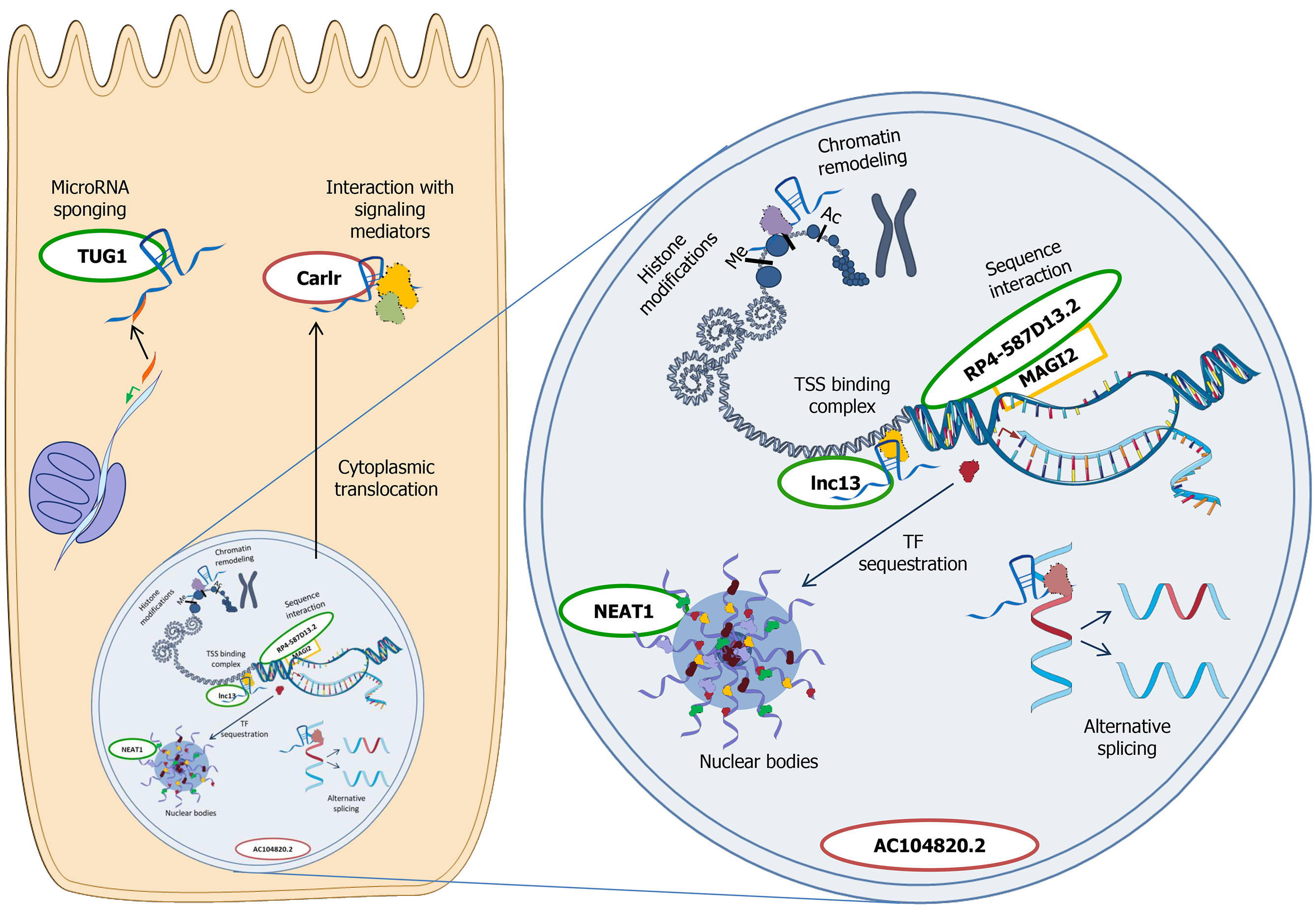Copyright
©The Author(s) 2022.
World J Gastroenterol. Jan 28, 2022; 28(4): 449-463
Published online Jan 28, 2022. doi: 10.3748/wjg.v28.i4.449
Published online Jan 28, 2022. doi: 10.3748/wjg.v28.i4.449
Figure 1 Schematic representation of DNA methylation and histone modifications.
Histone modifications are many and determine a different chromatin status, modifying DNA accessibility and interfering with gene transcription. Methylation can also happen directly on the DNA sequence, mainly resulting in gene silencing. The image is original and was created with the use of Servier Medical Art modified templates, licensed under a Creative Common Attribution 3.0 Unported License (https://smart.servier.com). DNMT: DNA methyltransferase.
Figure 2 Main mechanisms of action of long non-coding RNAs in the cell.
Cytoplasm - microRNA sponging: microRNAs are sequestered from their mRNA targets, resulting in mRNA translation; Interaction with signalling mediators: binding to pathway mediators can modulate downstream targets activation. Nucleus - chromatin remodeling: Long non-coding RNAs (lncRNAs) interact with chromatin and modify its conformation; histone modifications: lncRNAs influence the activity of the enzymes responsible for histone modifications; sequence interaction: lncRNAs act on nearby genes transcription; transcription start site (TSS) binding complex: lncRNAs bind ribonucleoproteins, interfering with gene transcription; transcription factor (TF) sequestration in nuclear bodies: TF are moved to nuclear bodies from the promoter region of target genes, influencing gene transcription. Nuclear bodies like paraspeckles consist in a lncRNA scaffold and target proteins; alternative splicing: lncRNAs determine a preferential splicing in favour of an isoform respect to another one. The so-far investigated lncRNAs in celiac disease (CeD) are reported near their known mechanism of action, respecting their main cellular localization. lncRNAs in green were reported to be downregulated in CeD, whereas the ones in red were found upregulated in a specific cell compartment. The image is original and was created with the use of Servier Medical Art modified templates, licensed under a Creative Common Attribution 3.0 Unported License (https://smart.servier.com). TSS: Transcription start site; TF: Transcription factor.
Figure 3 Potential use of epigenetics studies in celiac disease.
The image is original and was created with the use of Servier Medical Art modified templates, licensed under a Creative Common Attribution 3.0 Unported License (https://smart.servier.com). CeD: Celiac disease.
- Citation: Gnodi E, Meneveri R, Barisani D. Celiac disease: From genetics to epigenetics. World J Gastroenterol 2022; 28(4): 449-463
- URL: https://www.wjgnet.com/1007-9327/full/v28/i4/449.htm
- DOI: https://dx.doi.org/10.3748/wjg.v28.i4.449











